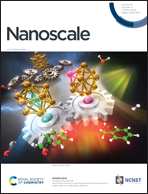Thermally assisted layer–layer crosslinking towards programmable evolution of pore structures for tunable electromagnetic response capability†
Abstract
The research and development of aerogel-based microwave absorbing materials with strong electromagnetic (EM) wave response is an emerging research topic in the EM wave absorption field. In order to implement light microwave absorbers with a broad bandwidth, freeze drying assisted with in situ thermally structure-directing techniques was applied to fabricate composite aerogels with orientation design. Thanks to the integration of pore structure regulation and conductive network construction, the as-prepared aerogel absorbers exhibit a tunable EM response covering a broad frequency range. In detail, the maximum reflection loss (RL) value of the CR-3 aerogel reaches −50.8 dB at 2.2 mm and its maximum effective absorption bandwidth reaches 5.4 GHz at 2.0 mm, which is in accordance with the numerical simulation results of the radar cross section (RCS), where the optimum RCS reduction of 21.4 dB m2 appears for the CR-3 aerogel when the detection theta was set as 0°. In all, this work paves the way for the exploration of high-efficiency aerogel absorbers by balancing the evolution of the pore structure and conductive connection at the same time.



 Please wait while we load your content...
Please wait while we load your content...